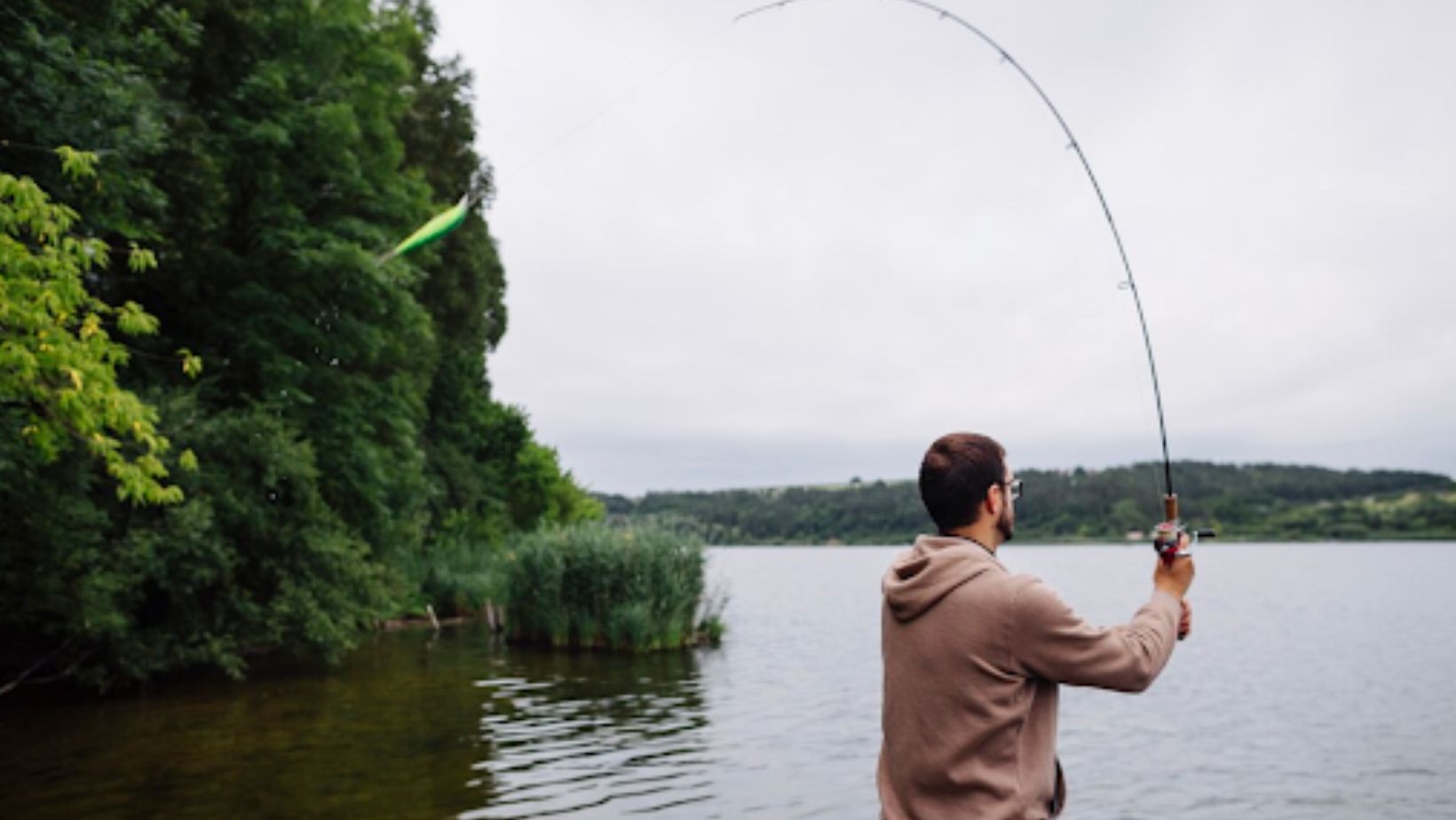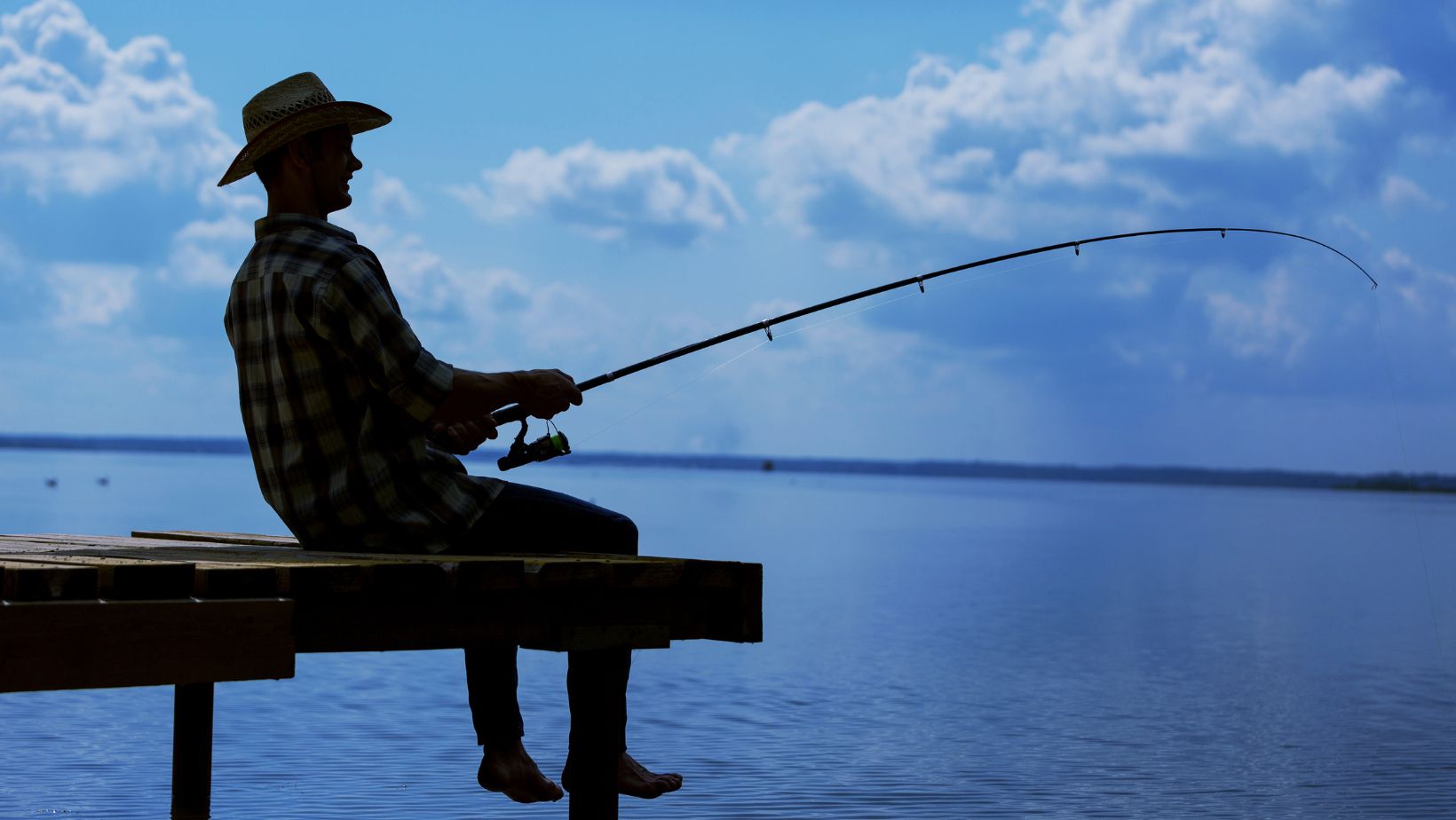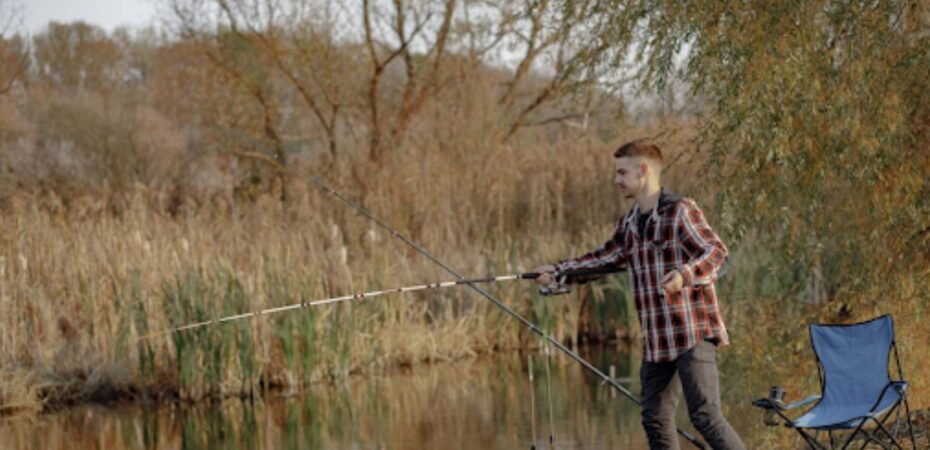The drop shot technique is one of the most effective finesse fishing methods for catching bass. Whether you’re fishing deep structures or targeting stubborn fish in clear water, this setup allows you to present your bait naturally, triggering strikes when other methods fail.
This guide will break down everything you need to know about drop shot fishing, from rigging and bait selection to presentation and advanced techniques. If you’ve ever struggled with getting bass to bite in tough conditions, this technique could be a game-changer.
What Is a Drop Shot Rig?
A drop shot rig is a finesse fishing setup where the hook is tied above the weight, allowing the bait to hover naturally off the bottom. Unlike traditional bottom-contact rigs, a drop shot rig keeps your bait in the strike zone longer, making it an excellent choice for finicky bass.
This rig is commonly used in both deep and shallow water. Anglers rely on it to target suspended fish, those holding tight to cover, or even bass cruising along structure lines. Guides and tournament pros, including those from Bass Online, often recommend this setup for its versatility and effectiveness in pressured fisheries.
Why the Drop Shot Technique Works for Bass
The drop shot rig works because it presents the bait in a way that bass can’t ignore. Instead of dragging along the bottom like a Texas or Carolina rig, the bait stays lifted, mimicking natural prey movements.
Here’s why this technique is so effective:
- Keeps bait in the strike zone longer – Bass doesn’t have to chase the bait since it remains suspended.
- Natural movement – The bait moves with slight twitches and current, making it appear more lifelike.
- Great for deep water – It’s easier to target fish in 10-30 feet of water where other finesse rigs struggle.
- Works in pressured waters – When bass ignore crankbaits and jigs, a drop shot’s subtle approach gets bites.
Choosing the Right Gear for Drop Shot Fishing
Rod Selection
A spinning rod is the best choice for drop-shot fishing. Look for a rod with these characteristics:
- Length – 6’10” to 7’2” provides a good balance of casting distance and control.
- Power – Medium-light to medium ensures sensitivity without overpowering finesse presentations.
- Action – A fast or extra-fast tip helps detect light bites and improves hooksets.
Reel and Line Setup
Pair your rod with a spinning reel in the 2500 to 3000 size range. This allows smooth line management and drag control, which is essential when fighting bass on light tackle.
For line, go with:
- Mainline – 6-10 lb braided line (braid offers sensitivity and better control).
- Leader – 6-8 lb fluorocarbon (nearly invisible in water, perfect for finicky bass).
Hook Selection
The hook size depends on the bait you’re using, but in most cases:
- #1 to 1/0 drop shot hooks for nose-hooking finesse worms.
- Straight-shank or offset hooks for Texas-rigging soft plastics when fishing around cover.
Weight Choices
Drop shot weights come in different shapes:
- Round weights – Best for open water.
- Cylinder weights – Ideal for rocky or weedy bottoms to prevent snagging.
- Tungsten weights – More sensitive than lead, allowing you to feel subtle bottom changes.
Weight size depends on depth:
- 1/8 oz to 1/4 oz for shallow water.
- 3/8 oz to 1/2 oz for deeper applications.
How to Rig a Drop Shot
Rigging a drop shot correctly is crucial for the best presentation. Here’s a step-by-step guide:
- Tie your hook onto the leader line – Use a Palomar knot, leaving 12-24 inches of tagline below the hook.

- Thread the tag end back through the hook eye – This ensures the hook points upward for better hookups.
- Attach your weight – Clip or tie the drop shot weight at the bottom. Adjust the leader length based on fish activity.
- Rig your bait – Either nose-hook, wacky rig, or Texas rig, your soft plastic, depending on cover and fishing conditions.
Perfect Baits for Drop Shot Fishing
Soft plastics that mimic baitfish or worms work best. Here are the top choices:
Finesse Worms
- Great all-around option.
- Subtle action appeals to both aggressive and inactive bass.
- 4-6 inches is the ideal length.
Shad-Style Baits
- Best for imitating baitfish.
- Works well in clear water.
- Use when the bass is keying in on shad or minnows.
Creature Baits & Craws
- Adds more movement and works well in stained water.
- Texas-rig these if fishing around brush or rocks.
Minnow Imitations
- Ideal for smallmouth and spotted bass.
- Great for targeting suspended fish in deep lakes.
Drop Shot Techniques for Different Conditions
Deep Water Drop Shot Fishing
When targeting bass in 20-40 feet, let your rig sink and maintain bottom contact. Light shakes and subtle twitches work best. Watch your line for slack or unusual movement—deep bass often inhale the bait without a hard strike.
Shallow Water Adjustments
In 5-15 feet of water, use a longer leader (up to 2 feet) to keep the bait above vegetation. Let the bait sit motionless at times—this can be more effective than constant movement.
Fishing Around Cover
If bass are near rocks, docks, or submerged trees, Texas-rig your bait to prevent snags. Use a heavier weight for better control of current or wind.
Suspended Fish Strategy
Bass that suspend off drop-offs or ledges can be tricky. Use a vertical presentation, lowering the rig directly beneath the boat. Small twitches keep the bait at eye level for passing fish.
Common Mistakes and How to Avoid Them
Even experienced anglers make mistakes when it comes to drop-shot fishing. Here are a few to watch out for:

- Using too heavy a weight – This reduces the bait’s natural movement. Use just enough to maintain bottom contact.
- Overworking the bait – Subtle shakes and pauses work better than aggressive jerks.
- Ignoring line sensitivity – Fluorocarbon leader helps detect soft bites. Always watch your line.
- Setting the hook too hard – Drop shot fishing requires a gentle lift instead of a power hookset.
When to Use a Drop Shot Rig
While the drop shot works year-round, it shines in these conditions:
- Clearwater situations – The finesse approach is perfect for pressured or spooky bass.
- Post-frontal conditions – When bass refuse reaction baits, a drop shot gets bitten.
- Summer and winter depths – Works great for deep fish when other baits won’t reach them.
Final Thoughts
The drop shot technique is one of the most reliable ways to catch bass when conditions get tough. It’s easy to learn, highly effective, and adaptable to any season or body of water.
By fine-tuning your gear, experimenting with bait choices, and adjusting your presentation, you’ll increase your success with this finesse approach. Next time you’re on the water, tie on a drop shot rig and see why so many bass anglers rely on this technique to put more fish in the boat.


 By
By 




